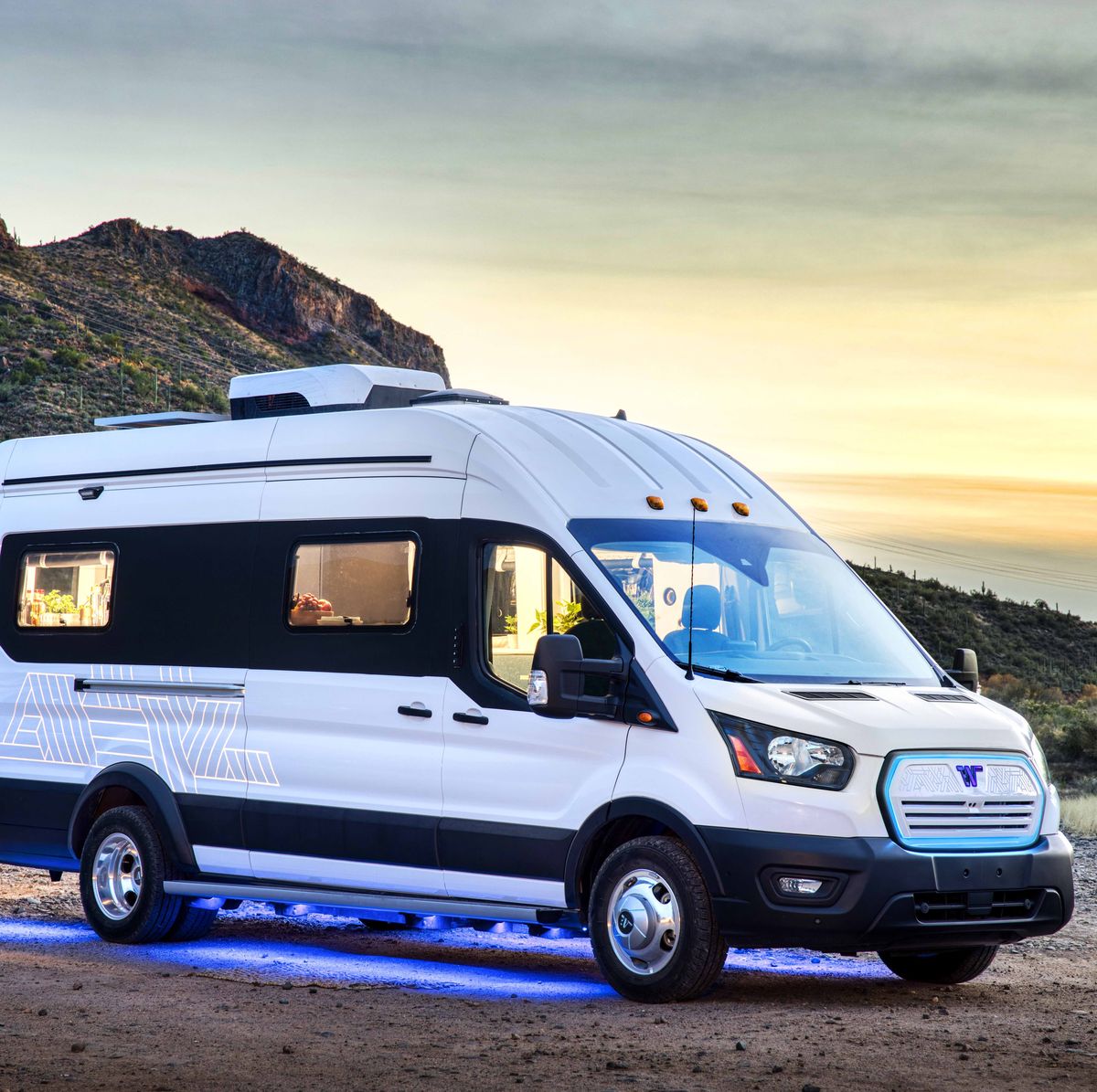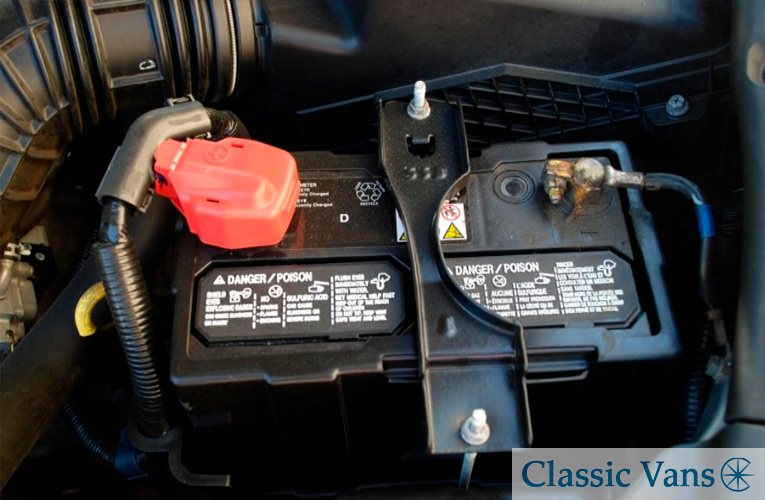Now here’s a new beast: electric campervans. It isn’t just about hitting the open road and experiencing nature at its finest anymore; it’s about doing so whilst reducing our carbon footprint. Adventurers, prepare yourselves to immerse in the wild in a gloriously guilt-free fashion – no longer will you need to choose between the convenience of a campervan and the tranquility of the natural world. I present to you an existential question: Can we explore and respect nature simultaneously? The answer is resounding “yes”! Climb in, strap up and let’s put the pedal to this eco-friendly metal.
Why Choose Electric Campervans?
There are several compelling reasons for choosing an electric campervan over its combustion-engined counterparts, not the least of which is its impact on the environment – or lack thereof. First of all, electric campervans are essentially mobile batteries on wheels. They’re zero-emission vehicles (ZEV), meaning that the only byproduct of your road trip will be a relaxed, refreshed version of yourself, not smog and polluted air.
But the advantages of electric campervans extend beyond the green credentials. For starters, with an electric campervan, you can wave goodbye to fluctuating fuel prices. Instead of nervously eyeing the petrol station signs as you cruise down the highway, you can cruise in confidence, knowing that your road-trip budget isn’t subject to the whims of the global oil markets.
Then there’s the fact that the running costs for an electric campervan are typically lower than those of a similar-sized vehicle with a traditional engine. Electric motors are incredibly efficient, with fewer moving parts which can reduce the frequency and cost of maintenance.
Electric campervans also offer abundant torque right off the line, offering a unique and pleasurable driving experience. If you’ve ever eased an electric vehicle onto the highway, you’ll know what we’re talking about: the surge of instant power and sublime smoothness is something that has to be experienced.
Last, but far from least, electric campervans offer you the opportunity to camp in silence, without the low hum of an idling engine or generator, letting you wake to the sounds of birds rather than the clatter of valve lifters. In this way, you can immerse yourself further into the tranquillity of nature.
So when you take into account the environmental impact, the cost savings, the driving experience, and the peace and quiet, it’s no wonder that many camping enthusiasts are plugging into the electric revolution. Make no mistake, choosing an electric campervan isn’t merely a fad, it represents a new way to explore nature in a more eco-friendly, wholesome, and sustainable manner.
What to Consider When Buying an Electric Campervan?

So, you’ve decided you want to be close to nature but not at the expense of Mother Earth. In that case, an electric campervan is your obvious choice; a home away from home that’s powered by zero-emission energy. However, there are a few key things you’ll need to consider before you rush into purchasing one.
One of the first things to consider would be the camper’s battery range. Picture waking up amidst leaf-carpeted mountain ranges with still hours to drive ahead of you. Now, you wouldn’t want your merriment to end because your battery decides to run out. So, when shopping for your electric campervan, take note of the vehicle’s range on a full charge.
Next comes the charging infrastructure. This would mainly revolve around the campervan’s compatibility with various charging points. Look for a model that uses universal chargers, rather than a proprietary one. Planning your trip around the density of compatible charging stations is like trying to shuffle a Rubik’s cube back to its initial color-coded perfection. Not fun.
Once you’re sure about the range and the ease of charging, consider space and comfort. Whether you’re aiming for a van that makes you feel like you’re in a Manhattan penthouse or just need enough room to stretch your legs after a long hike, take a look at the square footage and layout before you purchase.
Price is another major aspect. Sure, embracing sustainability might give you a sense of moral high ground, but if it leaves holes in your pocket, it wouldn’t really taste as sweet. So, find a van that suits your budget. Do remember though, electric campervans often cost more upfront but have lower maintenance costs and running expenses. Hence, keep a watchful eye on both the short-term and long-term costs.
Lastly, research the van’s warranty coverage. Let’s face it: Electric vehicles are complex machines, and anything complex has the potential to throw a tantrum. Having good warranty coverage will give you that peace of mind when you’re out exploring the wild. In addition, check for after-sales support in areas where you plan to travel.
So while electric campervans are greener, cozier, and cooler versions of their gas-guzzling brothers, bear these critical points in mind, to make sure that you’re as happy with your new mobile home as a bear with a pot of honey. Just with fewer sticky situations.
Top Electric Campervans Models

Volkswagen has been championing the campervan charge since the days when “Flower Power” was all the rage. Their forthcoming vehicle, the ID Buzz electric Microbus, somewhat of a spiritual successor to the storied VW camper of the 60s, promises to roll down memory lane with a sustainable twist. Expected to hit the streets in 2022, the ID Buzz is set to offer a blend of nostalgia, versatility, and eco-consciousness.
Next on our campervan road trip of highlights, we journey to the Mercedes-Benz eSprinter. Yes, the eSprinter is primarily a commercial vehicle, but its cargo version serves as an excellent canvas for camper conversion. Featuring a range of around 104 miles, flexible interior space, and carrying the weight of Mercedes’ reputation for robust reliability, the eSprinter represents a solid choice for those considering a bespoke build.
Portraying a twist on the Tesla campervan concept, the forthcoming Tesla Semi camper conversion is anticipated to offer a substantial energy-dense battery pack, providing an impressive range. The conversion, conceived by Vanlifer, showcases a nifty layout incorporating a kitchen, double bed, shower room, and innovation – a solar roof for additional power accrual.
Pining for an ultra-luxury experience? Look no further than the Dethleffs e.Home, boasting self-sufficient driving via a comprehensive solar panel system. This German engineering masterpiece features an all-electric camper with touch-oriented control panels, infrared heating elements in the floor, walls, and furniture, ensuring you steer clear of chills during nippy nights in the wilderness.
Finally, say ‘yes’ to space and ‘no’ to emissions with the Opel Zafira-e Life Campervan. With room for four adventure enthusiasts and offering a battery capacity of 50 kWh for a range of around 143 miles, this van even exhibits a kitchenette, should the wilderness culinary bug bite.
Crucially, keep in mind that infrastructure and range must be considered before heading off into unknown territories powered by electricity. Check the map for charging stations, plan stops accordingly, and go forth into the embrace of mother nature, knowing your journey won’t contribute further to her detriment.
Maintenance Tips for Electric Campervans

As you traverse the scenic backgrounds and embrace the serene ecosystem, electric campervans prove to be worthy companions. But to keep the wheels running, maintenance is the key that balances performance and sustainability. Caring for your electric-powered steed isn’t rocket science, it’s just being proactive with a dash of environmental consciousness. Here’s how to keep your electric campervan in top-notch form:
Protect your battery’s Integrity – The battery is the heart of your electric campervan. Keep your battery charge between 20% and 80% for optimal longevity. Avoid running it down completely or charging it to 100%, as both can put strain on the battery. Keep an eye on the temperature too, as extreme hot or cold can affect its performance.
Monitor tire health – Properly inflated tires help maintain maximum range since deflated tires can cause your campervan to use more energy. A regular tire check to maintain proper inflation can add miles to your drive range, and regular rotation and alignment can continue to support your campervan’s efficiency.
Regular brake check – Unlike conventional vehicles, electric campervans use regenerative braking technology to transform kinetic energy into electric power. This technology reduces wear on brakes, but occasional checks are still essential as any disturbances in braking could demand higher energy consumption, thus impacting your battery life.
Care for your campervan’s body – Keeping the body of the campervan clean and waxed not only keeps it looking shiny but also reduces drag when you’re driving, which can help with your range. Remember, even the smallest efficiency improvement can give you those extra few miles you might need.
Stay updated with software – Much about what makes an electric campervan modern and sustainable are its software features. Manufacturers often roll out updates that can improve the range and performance of your campervan. Make sure your vehicle is up to date and take advantage of any improvements on offer.
Now, while most of these tasks you can carry out yourself, do not hesitate to schedule regular check-ups with your nearest service provider. Prevention is better than cure and it indulges you to soak up that extra smile knowing your silent beast is running at peak efficiency.
Remember, treating your electric campervan right extends its life, betters your experience, and reduces your carbon footprint. So, continue to explore nature with a steadfast spirit and a well-maintained campervan!
FAQs
1. Why should I pick an Electric Campervan over conventional ones?
Well, my friend, it all starts with the scent. Forget about diesel, gasoline, or the ghost of last week’s tuna sandwich. It’s time to embrace the splendid aroma of…nothing. Absolutely nothing! Electric Campervans give out no emissions, thus respecting Mother Nature, who in turn doesn’t assault you with the pangs of guilt. Plus, imagine this – just you, the open road, and the subtle hum of electric power. Now that’s poetry!
2. Is it safe to drive an Electric Campervan in all weather conditions?
Absolutely! It’s as safe as putting socks on a rooster. If you’re inclined to drive through a tempest, blizzard, or an alien invasion, your Electric Campervan won’t wave the white flag. It’s built, not just to prance around in sunny Californian boulevards, but for anything you, or Mother Nature, could throw at it. So, buckle up and don’t forget your sunscreen or your snow boots!
3. How cost-effective are Electric Campervans?
It’s like asking how sharp a tack is. Sure, the initial investment might feel like a kick in the wallet, but over time? Boy, does that change. You’ll find yourself passing gas stations so often it’ll feel like you’re moonwalking. Future you will be sitting on a lush green lawn of savings, sipping on an eco-friendly smoothie, and thanking present you for making a smart decision.
Conclusion
Electric campervans indeed chart a compelling route into a future where exploring nature need not mean harming it. With advancements in battery technology, range anxiety will soon become a thing of the past. Meanwhile, the joy of silently gliding through wilderness trails, leaving nothing behind but tire tracks, is a future every outdoors lover can get behind. After all, the journey should be just as enjoyable and responsible as the destination. Let’s explore sustainably, for our sake and nature’s.
